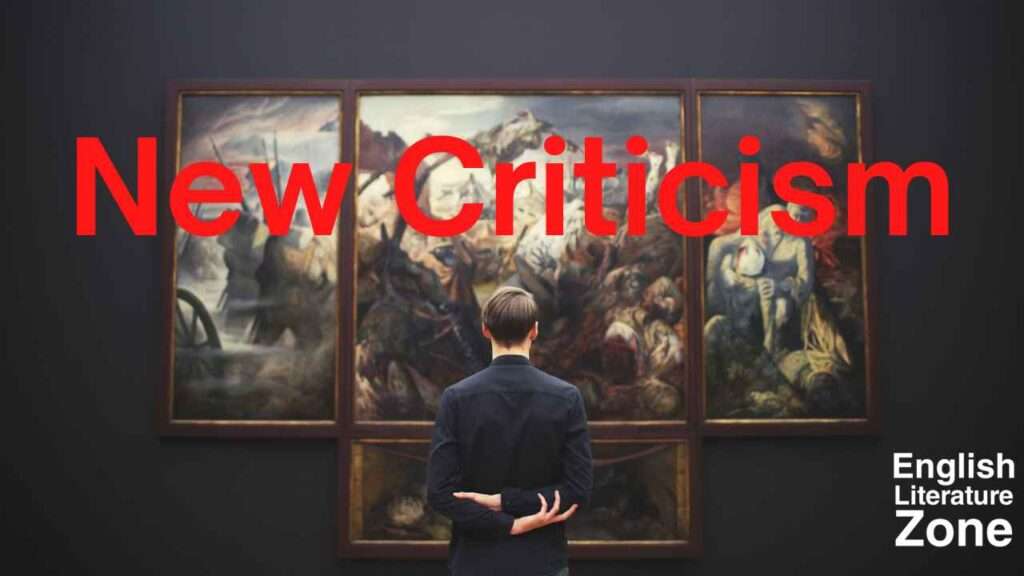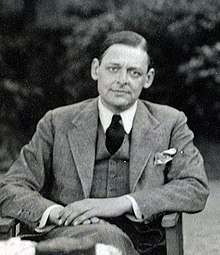New Criticism in literature | 20th Century Criticism | Modern Criticism

Introduction:
The New Criticism was a formalist Movement in literary theory that dominated American literary criticism in the middle decades of the 20th century. It emphasized close reading, particularly poetry, to discover how a work of literature functioned as a self-contained, self-referential, aesthetic object. The movement delivered its from ‘John Crowe Ransoms’ 1941 book “The New Criticism”. The method of New Criticism is a close reading and concentrates on such a formal aspects as rhythm, theme, imaginary metaphor, etc.
The meaning of new criticism is to analyze and find the meaning within Literature by utilizing just the text, rather than considering any influence or intentions of the author or the historical and cultural background might have had on the work. This theory focuses on the idea that the true meaning can be found in the text. The foundation of the New Criticism was laid in the books and essays written between 1920 and 1930 by J. A. Richard (practical criticism) T. S. Eliot (The Function of Criticism). The approach was significantly developed, late however by a group of American poets and critics including John Crowe Ransom, Cleanth Brooks, Robert Penn Warren, and William K. Wimsatt.
Chief Exponent of New Criticism:
I. A. Richards

Ivor Armstrong Richards together with Eliot is the most influential critic in the 20th century Anglo American criticism. He has been considered the father of new criticism. Among the modern I. A. Richard is the only critic who has formulated a systematic and complete theory of literary art. His reputation as a critic in a limited number of the critical books he wrote, his first book The Foundation of Aesthetics written in collaboration with his two friends.
In the book, the authors have tried to define beauty by studying its effect on readers. His second book The Meaning of Meaning was written with Ogden, it distinguished between the symbolic use of language in Science and its emotionally used in poetry. Practical Criticism is based on his lecture room experiments conducted in Cambridge.
“The quality of a good critic is three, says I. A. Richard”
(i) A critic must be adept at experiencing without eccentricities, the state of mind relevant to the work of art.
(ii) Critic must be able to distinguish experiences from one another as regards their less superficial features
(iii) Critic must be a sound judge of value.
Richard himself poses their qualities. He did a great service to literacy criticism by linking it with psychology.
TS Eliot

Tradition and individual talent are one of the more well-known works that Eliot produced in his critique capacity. This essay was first published in The Egoist (1919), and later in Eliot’s first book of criticism, The Sacred wood (1920). In his essay Hamlet and his problem, he uses the phrase Objective Correlative. It describes how emotions are best expressed in poetry and it is a part of his theory e of impersonality concentrating not on the poet but the poetry Eliot’s insistence on the fact, that poetry must be impersonal greatly influenced the formation of New Criticism.
John Crowe Ransome
John Crowe Ransom was an American educator, scholar, critic, poet, essayist, and editor. He is considered to be the founder of New Criticism. He says that Critics must study literature, not about literature. In new criticism propose the following ideas: –
◽ Text becomes the focus of the close reading.
◽ The analysis of a text has to be scientific and precise.
Personal historical, moral, and biographical details around a text are all rejected in the field of New Criticism.
Cleanth Brooks
Cleanth Brooks was an influential American teacher and critic, whose work was important in establishing the new criticism, which stressed close reading and Structural Analysis of literature.
William Kurtz Wimsatt
William Kurtz Wimsatt was also an American professor of English literary theorists and critics. Wimsatt is often associated with a discussion of intentional fallacy which he developed with Monrac Beardsley in order to discuss the importance of an author’s intention with the creation of a work of art.
Intentional Fallacy is the mistake of attempting to understand the author’s intentions when interpreting a literary work. Such an approach is fallacious because the meaning of a work should be contained solely within the work itself, and attempts to understand the author’s it intention wallet violate the autonomy of the work.
Robert Penn Warren
Robert Penn Warren was an American poet, novelist, and literary critic. He was one of the founders of new criticism. Along with Cleanth Brooks, he was also known as the leading representative of New Criticism and his works helped revolutionize the teaching of literature by bringing New Criticism into America’s College classroom.
Conclusion:
Thus, New Criticism focused on the purity of text and purity of the act of reading and analyzing without bothering about historical or political perspectives around the text. To apply New Criticism, a critic must look only at the text of a work of literature and can find its meaning by looking at the themes, structures, and literary devices present. New Criticism takes the idea of text as an isolated cerebral process away from politics, morality, history, etc.
Are you struggling to keep up with your English Literature Coursework? Do you need detailed, customized English Literature Notes to help you better understand the texts you’re studying? “Look no further! Our customized paid notes will help you achieve your study goals quickly.
Tags: new criticism analysis, new criticism examples, new criticism sparknotes, new criticism vs formalism, new criticism pdf, new criticism characteristics, what is new criticism in literature, new criticism by english literature zone, new criticism summary
New Criticism in literature | 20th Century Criticism | Modern Criticism Read More »
